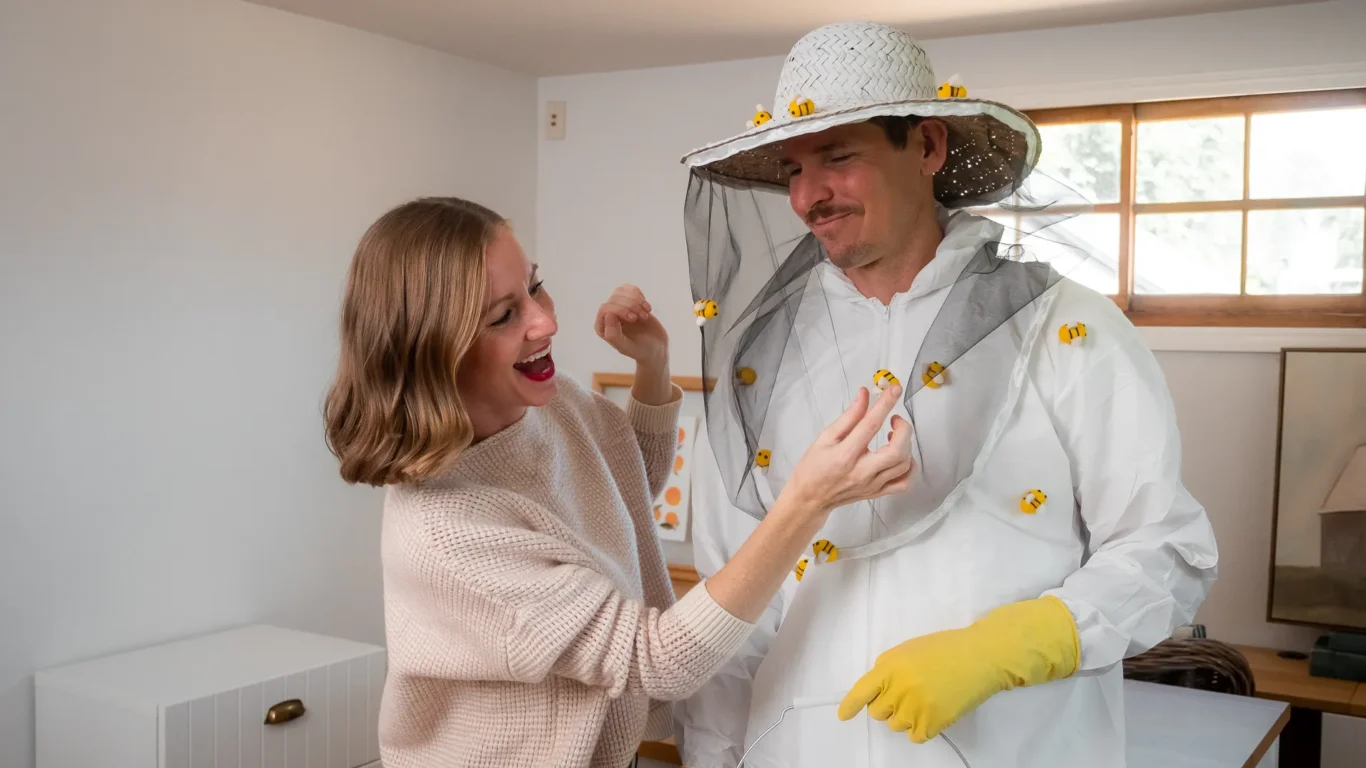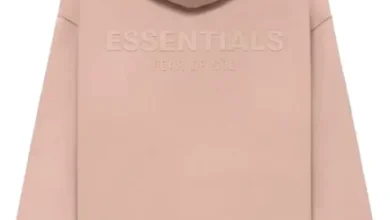Sting-Proof Bee Suits: Beekeeping Safety Essentials for the UK

Introduction
Beekeeping can be a rewarding hobby or profession, but it comes with its risks—bee stings being the most notable. That’s why a sting proof bee suit uk is an essential investment for anyone involved with bees. In this comprehensive guide, we’ll delve into everything you need to know about sting-proof bee suits in the UK, from understanding their importance to choosing the best one for your needs.
Understanding Bee Suits
What is a Bee Suit?
A bee suit is protective clothing designed to prevent bee stings while allowing the beekeeper to move and work comfortably. It typically includes a full-body suit, a hat or veil, gloves, and boots.
History of Bee Suits
The concept of protective clothing for beekeepers dates back centuries. Early designs were rudimentary, often made from heavy fabrics that offered some protection but lacked comfort and mobility. Modern bee suits have evolved significantly, incorporating advanced materials and ergonomic designs.
Materials Used in Bee Suits
Modern bee suits are made from various materials such as cotton, polyester, and specialized fabrics like ventilated mesh. These materials provide a balance of protection, comfort, and breathability.
The Need for Sting-Proof Bee Suits
Risks of Bee Stings
Bee stings can be painful and, in some cases, cause severe allergic reactions. For professional beekeepers or hobbyists, multiple stings can be a significant hazard.
Benefits of Sting-Proof Bee Suits
Sting-proof bee suits offer several benefits, including:
- Protection from stings
- Increased confidence while handling bees
- Reduced anxiety and stress during beekeeping activities
Who Needs a Sting-Proof Bee Suit?
Anyone involved in beekeeping, whether a hobbyist, professional, or even someone assisting in bee removal, should consider investing in a sting-proof bee suit.
Features of Sting-Proof Bee Suits
Material and Fabric
The best bee suits are made from durable, breathable fabrics that provide both protection and comfort. Look for suits with multiple layers of mesh or other ventilated materials.
Design and Fit
A good bee suit should fit snugly without being too tight. Elastic cuffs, adjustable hoods, and zippers that secure tightly are essential features.
Ventilation and Comfort
Working in a bee suit can get hot, especially in summer. Suits with ventilation panels help keep you cool while maintaining protection.
Visibility and Mobility
Clear visibility through the veil and freedom of movement are crucial for performing tasks efficiently and safely.
Choosing the Right Bee Suit
Factors to Consider
When choosing a bee suit, consider the following:
- Material and durability
- Comfort and fit
- Ventilation
- Visibility
- Price
Comparing Different Brands
Research and compare different brands to find the best suit for your needs. Read reviews and check ratings from other beekeepers.
Price Range and Budget
Bee suits come in a range of prices. While it might be tempting to go for the cheapest option, investing in a higher-quality suit can offer better protection and durability.
Top Sting-Proof Bee Suits in the UK
Overview of Top Brands
Some of the top bee suit brands in the UK include:
- Bee Smart
- Sherriff
- Humble Bee
- VIVO
Detailed Reviews of Each Suit
Bee Smart Sting-Proof Suit
- Pros: Excellent ventilation, comfortable fit, durable fabric
- Cons: Slightly higher price
Sherriff Apiarist Suit
- Pros: High-quality material, great protection, comfortable
- Cons: Heavy for long periods
Humble Bee 410 Polycotton Suit
- Pros: Affordable, good protection, lightweight
- Cons: Limited sizes
VIVO Professional Bee Suit
- Pros: Full coverage, durable, well-ventilated
- Cons: Bulky design
How to Properly Wear a Bee Suit
Step-by-Step Guide
- Put on the suit: Step into the legs first, then pull the suit over your torso.
- Secure zippers and Velcro: Ensure all zippers and Velcro strips are fastened securely.
- Adjust the veil: Make sure the veil is properly attached and provides clear visibility.
- Wear gloves and boots: Ensure there are no gaps where bees can enter.
Common Mistakes to Avoid
- Leaving gaps or openings
- Wearing loose clothing underneath
- Neglecting to check for tears or damage
Tips for Ensuring Maximum Protection
- Double-check all fastenings
- Wear appropriate clothing underneath
- Regularly inspect your suit for damage
Maintenance and Care of Bee Suits
Cleaning and Washing Instructions
- Hand wash or use a gentle machine cycle
- Use mild detergent
- Avoid bleach or fabric softeners
- Air dry to maintain the integrity of the fabric
Storage Tips
- Store in a cool, dry place
- Keep away from direct sunlight
- Fold neatly to avoid creases
How to Repair Minor Damages
- Use fabric patches for tears
- Replace broken zippers or Velcro strips
- Regularly inspect and repair any damage
Bee Suit Accessories
Gloves
Choose gloves that offer protection without compromising dexterity.
Boots
Boots should be sturdy, comfortable, and provide full ankle coverage.
Hats and Veils
Ensure the veil offers clear visibility and is securely attached to the suit.
Where to Buy Sting-Proof Bee Suits in the UK
Online Stores
- Amazon UK
- Bee Equipment
- The Bee Shop
Physical Stores
- Local beekeeping supply shops
- Agricultural stores
Buying Second-Hand
- Check for any damage or wear
- Ensure proper fit
- Disinfect before use
DIY Bee Suits: Is It Worth It?
Pros and Cons of Making Your Own Bee Suit
Pros:
- Cost-effective
- Custom fit
Cons:
- Time-consuming
- May lack professional-grade protection
Materials Needed
- Heavy-duty fabric
- Mesh for ventilation
- Sewing materials
Step-by-Step Guide
- Design the suit: Plan and measure your design.
- Cut the fabric: According to your measurements.
- Sew the pieces together: Ensure all seams are secure.
- Add ventilation: Incorporate mesh panels for breathability.
- Attach fastenings: Use zippers and Velcro to secure the suit.
Common Misconceptions About Bee Suits
Myth vs. Reality
Myth: All bee suits are hot and uncomfortable. Reality: Modern suits are designed with ventilation for comfort.
Myth: Bee suits guarantee 100% sting protection. Reality: While highly protective, no suit can guarantee total protection.
Conclusion
Investing in a sting-proof bee suit is essential for anyone involved in beekeeping. These suits provide the necessary protection against stings, allowing beekeepers to work confidently and comfortably. With various options available in the ventilated bee suit, finding the right suit involves considering factors like material, fit, ventilation, and budget. By choosing a high-quality bee suit and following proper maintenance and care guidelines, you can ensure a safe and enjoyable beekeeping experience.
FAQs
What is the best material for a bee suit?
The best material for a bee suit is usually a combination of cotton and polyester with ventilated mesh panels. This blend offers durability, breathability, and comfort.
Can bee suits protect against all stings?
While bee suits significantly reduce the risk of stings, no suit can guarantee 100% protection. Proper fit and maintenance are crucial for maximizing protection.
How often should I replace my bee suit?
Depending on usage and care, a high-quality bee suit can last several years. Regularly inspect your suit for signs of wear and tear and replace it if it becomes damaged or compromised.
Are there any eco-friendly bee suits available?
Yes, some manufacturers offer eco-friendly bee suits made from sustainable materials. Look for brands that prioritize environmental responsibility in their production processes.
What should I do if my bee suit gets damaged?
If your bee suit gets damaged, repair it promptly using fabric patches or by replacing broken zippers and Velcro strips. Regular maintenance can extend the life of your suit and ensure ongoing protection.




